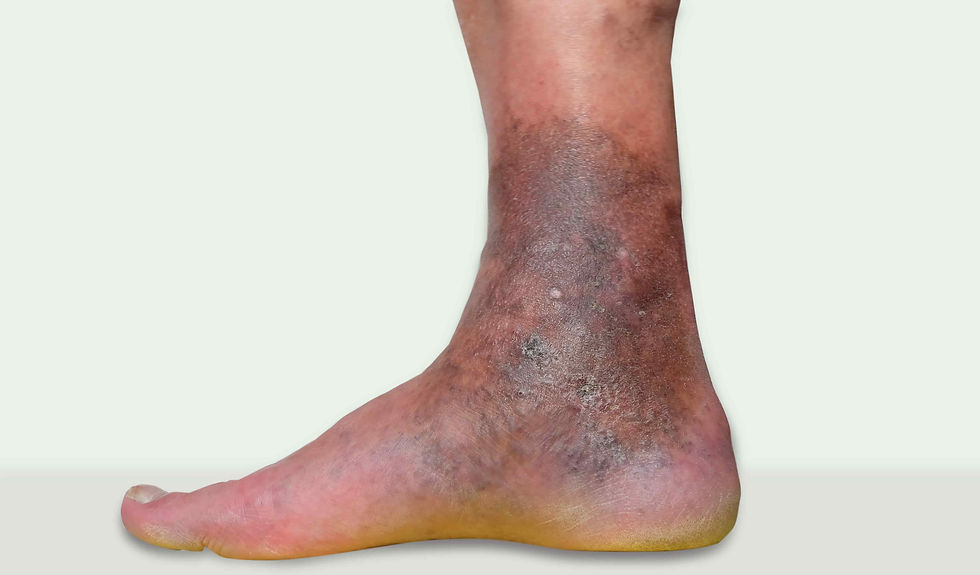What Happens if You Leave Varicose Veins Untreated?
- Dr. Soroush Sohrabi

- Aug 23
- 5 min read
Updated: Oct 3
It’s common to think of varicose veins as just a part of aging or a cosmetic issue. However, these visible, twisted veins can be an early sign that your vein circulation isn’t functioning as efficiently as it should. While not always urgent, they may reflect underlying venous insufficiency that deserves attention.
Untreated varicose veins may gradually lead to symptoms that affect comfort, mobility, and overall quality of life. The good news is that modern, minimally invasive treatments can manage the condition effectively and prevent complications.
In this blog, we explore what are the potential risks of untreated varicose veins and the most effective treatment options available today.

What are Varicose Veins?
Varicose veins are enlarged, twisted veins commonly appearing in the legs and ankles. They develop when the small valves within the veins malfunction, causing blood to pool instead of flowing upward toward the heart.
This increase in pressure causes the veins to swell and become visible through the skin.
While some people experience mild discomfort, others may develop ongoing symptoms or more serious complications.
What Happens to Untreated Varicose Veins?
It’s easy to assume that if varicose veins aren’t painful, they don’t require treatment. However, even without discomfort, they can slowly progress and may lead to other changes in the legs over time. Below are some of the potential developments that can occur if varicose veins are left unmanaged;
1. Leg swelling and leg ache
Over time, untreated varicose veins can lead to a feeling of heaviness or mild aching in the legs, especially after long periods of standing. Some people may notice occasional puffiness around the ankles or experience night-time cramps. While these symptoms often start out mild, they can gradually become more noticeable and affect daily comfort, including walking or resting. Fortunately, these issues are manageable with timely care and simple treatment options

2. Skin damage and discolouration
When varicose veins are left untreated, the ongoing pressure in the veins may gradually affect the surrounding skin. You might begin to notice subtle changes, such as a reddish or brownish tint around the ankles or lower legs. The skin in these areas can feel dry, itchy, or tighter than usual. In some cases, the texture may slowly become thicker or firmer. These skin changes with varicose veins suggest that the skin isn’t receiving optimal circulation, but with proper evaluation and care, further progression can often be prevented.
3. Development of leg ulcers
In some long-standing cases, varicose veins can lead to skin breakdown near the ankles, resulting in what’s known as a venous ulcer. These are open areas on the skin that may take longer to heal and sometimes require ongoing wound care. While this sounds concerning, it’s important to know that such complications are uncommon and often preventable. Seeking early treatment for varicose veins can significantly reduce the risk of leg ulcers and support long-term leg health.
4. Bleeding
Although it’s not very common, varicose veins located close to the skin’s surface can sometimes become more fragile over time. In these cases, a minor bump or scratch may occasionally lead to unexpected bleeding. While this can be unsettling, it’s typically manageable and can be prevented with appropriate vein treatment. Addressing varicose veins early helps reduce the chances of this happening.
5. Clotting and inflammation
In some cases, poor circulation in varicose veins can lead to a condition called superficial thrombophlebitis—a mild form of inflammation caused by a small clot in a vein near the surface of the skin. This can result in redness, tenderness, and a firm, warm vein under the skin. While it’s usually not dangerous, it can be uncomfortable and may indicate that your circulation needs further assessment. Fortunately, this condition is manageable, and early vein treatment can help prevent it from recurring or progressing.
When to See a Vascular Specialist?
If you’re noticing any of the following signs, it may be time to speak with a vascular specialist for a proper assessment:
A feeling of heaviness or aching in the legs, especially toward the end of the day
Swelling in one or both legs
Itching, dryness, or flaky skin near visible veins
Discolouration or hardening of the skin around the ankles
Sores or wounds that take longer than usual to heal
These symptoms may suggest that your varicose veins are progressing and could benefit from medical attention. Early evaluation can help you avoid complications and explore effective, minimally invasive varicose treatment options.
Varicose Veins Treatment Options
Treating varicose veins doesn’t have to involve surgery. Today’s advanced, minimally invasive techniques offer effective relief with minimal discomfort and downtime.
Depending on your condition, your vascular specialist may recommend one or more of the following options:
Laser Treatment (EVLT): Uses targeted heat energy to seal the affected vein
Radiofrequency Ablation (RFA): A heat-based approach that closes the vein with excellent long-term success
ClariVein® (MOCA): A non-thermal, non-tumescent option that combines mechanical and chemical action to gently close the vein
VenaSeal™: A medical adhesive is used to seal the vein shut—no heat, no multiple injections, and minimal post-treatment bruising
These procedures are performed on an outpatient basis, allowing you to return home the same day. Most patients resume light activities within 24 to 48 hours.
Expert Evaluation and Personalised Care with Dr. Soroush Sohrabi
Varicose veins are often dismissed as a cosmetic issue, but they can be an early sign of underlying venous disease. Addressing them early can help improve comfort, prevent progression, and support long-term vascular health.
Dr. Soroush Sohrabi is a UK-trained Consultant Vascular and Endovascular Surgeon with extensive international experience in minimally invasive vascular techniques. With formal vascular ultrasound training from the University of Leeds and previous leadership of a major vascular unit in the UK, he brings a depth of diagnostic accuracy and surgical expertise to his practice in Dubai.
As a published academic and recipient of the prestigious Medawar Medal, Dr. Sohrabi is committed to delivering evidence-based, personalised care. Every treatment plan is tailored to the individual, with a focus on long-term results, safety, and patient comfort.
If you’re experiencing symptoms such as leg heaviness, swelling, or skin changes, it may be time for a vascular assessment. Early evaluation can help clarify the cause and offer appropriate, minimally invasive options for management.
If you’re struggling with spider or varicose veins, consider consulting a specialist for the right treatment plan tailored to your needs. Dr. Soroush Sohrabi offers advanced options for both spider veins and varicose veins treatment Dubai, helping you achieve healthier, more confident legs.
📞 Book your consultation today and take the first step toward healthier, vein-free legs in Dubai.




